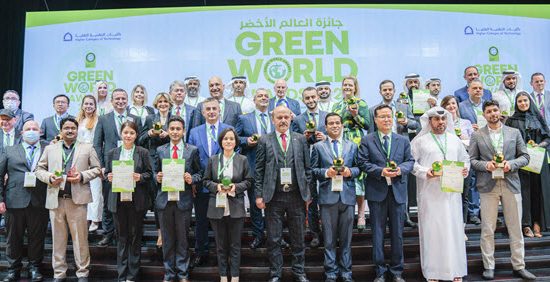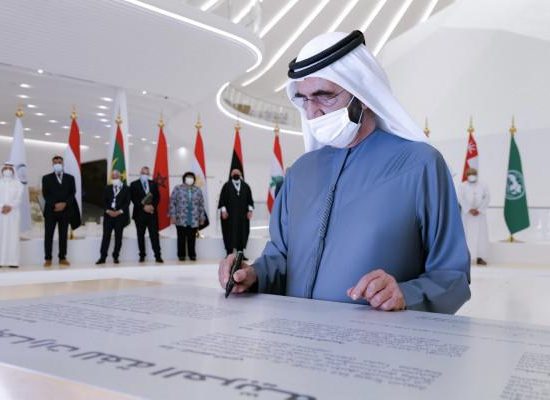UAE. The Middle East & North Africa ranks well above North America, Europe and Latin America in terms of market growth opportunities according to the Grant Thornton Global Dynamism Index (GDI) 2015.
However, the region is lagging behind on a number of other indicators including labour market and financing environment.
The GDI – which combines 22 indicators across five growth areas to identify the best business growth environments in the world – finds the United Arab Emirates (UAE) as the leading economy in the region.
The UAE ranks 34= (level with India), but rises to 7 for financing environment and 14 for market growth, which further signifies the growth potential in the country.
The other seven regional economies included in the index all rank in the bottom fifteen overall, but there are some positive stories. For example, Algeria tops the labour market growth area thanks to productivity growth of 8.4% in 2014. Nigeria ranks 4 in terms of market growth and Kenya rises nine places from the previous iteration of the index and ranks 9 for market growth and 26 for technology.
Hisham Farouk, CEO of Grant Thornton in the United Arab Emirates said: “The GDI results confirm that there are some fantastic business growth opportunities across the Middle East and Africa, but also some major challenges business leaders need to be aware of too. The UAE has done a lot to improve its inward investment offer while Nigeria and Kenya are huge, rapidly developing markets. The goal now for many markets across the region is to lower the risks for business leaders associated with operating.
“Market entry decisions are some of the toughest a business leader ever has to face. There are so many factors – both known and unknown – to consider. Uncertainty about what lies ahead can make it hard to make the case for action to colleagues and funding partners, and to manage risk effectively.
“Our GDI cannot solve this dilemma; it should not replace engaging with an advisor with a deep understanding of international expansion. But it can be used as a tool to help identify countries of interest of which the UAE has been highlighted as one.”
Perception vs reality
Further analysis of the results suggests business leaders looking at or operating in the region have a good grasp of the local investment challenges. For example, 52% of business leaders in the Grant Thornton International Business Report (IBR) cite local legislation/regulatory requirements as key challenge to operating in the MENA region.
Hisham Farouk continued: “A lack of familiarity with a particular territory or region can skew perception and make it be difficult to bring the vision of expanding into new markets to life. Some of the largest corporations in the world, which are relatively data rich and have the resources to send people to scope out opportunities on the ground, have slumped in new markets due to a lack of regulatory grasp.
“For dynamic businesses, the trick is balancing instinct with reason and perception with reality. This study reveals how looking behind the headlines can uncover unexploited opportunities for dynamic businesses in new markets. The business world is always changing, with the realities on the ground often surprising business leaders who take a closer look. In order to maximise growth potential, business leaders need to refresh their perceptions of foreign markets in line with the market insights at their disposal.”
To read the report, please click here.
Photo Caption: Hisham Farouk, CEO of Grant Thornton in the United Arab Emirates
About the Global Dynamism Index: The Grant Thornton Global Dynamism Index (GDI) is an annual research project designed by the Economist Intelligence Unit and commissioned by Grant Thornton, which ranks the development of the business growth environments of 60 of the world’s largest economies over the past 12 months. The index draws together 22 indicators, including GDP growth, R&D spend, regulatory risk, access to finance and labour productivity, across five areas of dynamism to produce the rankings.
Full data is available via www.globaldynamismindex.com
About the International Business Report: The Grant Thornton International Business Report (IBR) provides insight into the views and expectations of more than 10,000 businesses per year across 36 economies. This unique survey draws upon 22 years of trend data for most European participants and 11 years for many non-European economies.
More information: www.grantthornton.global
Questionnaires are translated into local languages with each participating country having the option to ask a small number of country specific questions in addition to the core questionnaire. Fieldwork is undertaken on a quarterly basis, primarily by telephone. IBR is a survey of both listed and privately held businesses. The data for this release are drawn from interviews with more than 5,000 chief executive officers, managing directors, chairmen or other senior executives from all industry sectors conducted between February and May 2015.
This entry passed through the Full-Text RSS service – if this is your content and you’re reading it on someone else’s site, please read the FAQ at fivefilters.org/content-only/faq.php#publishers.








